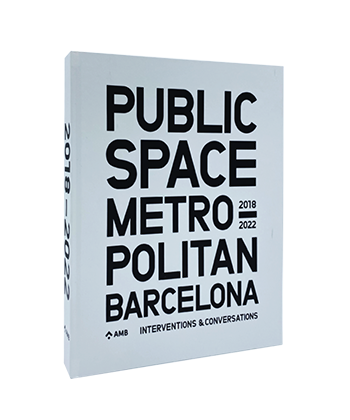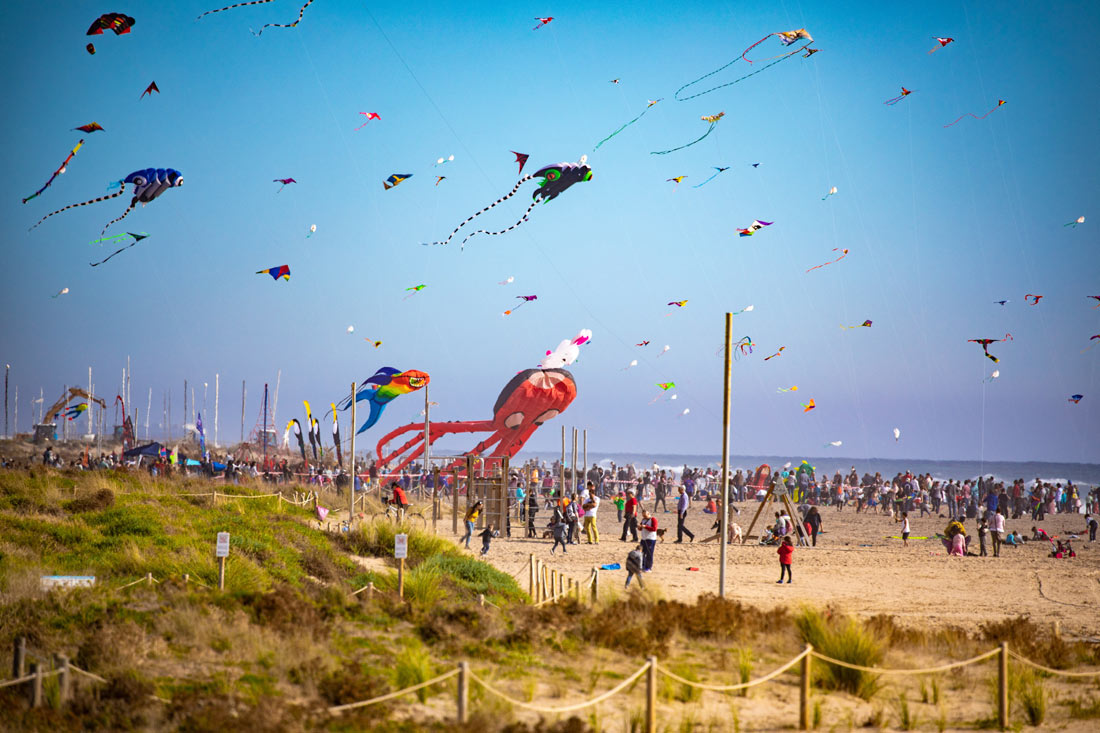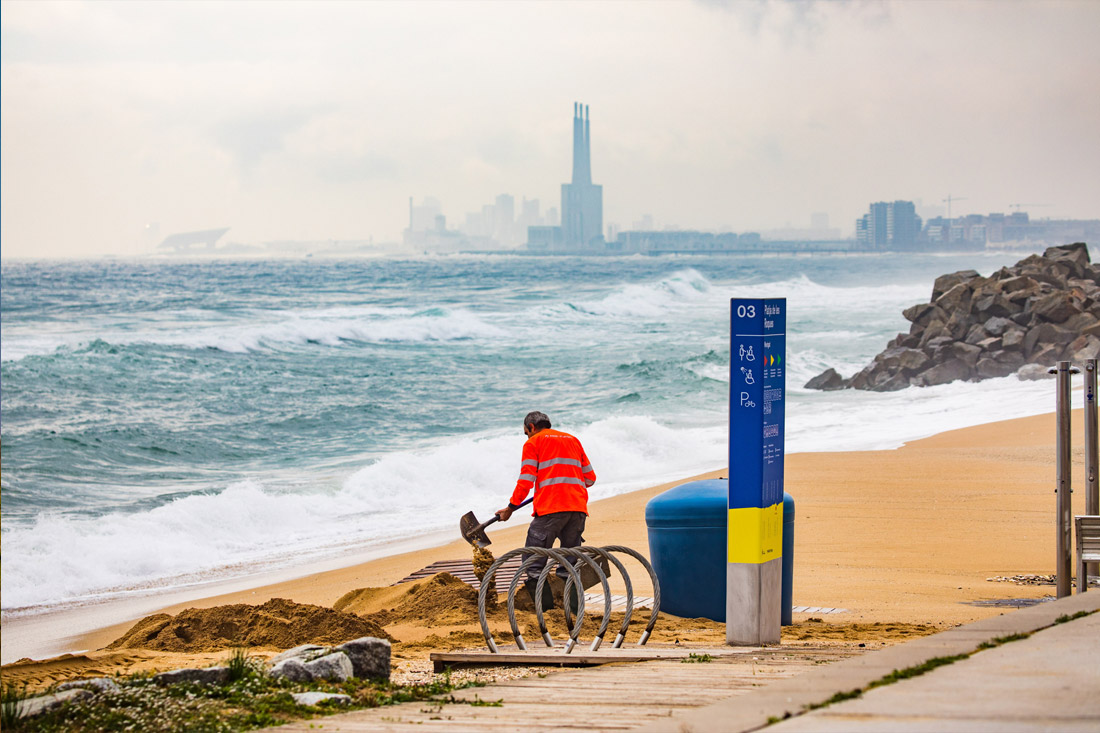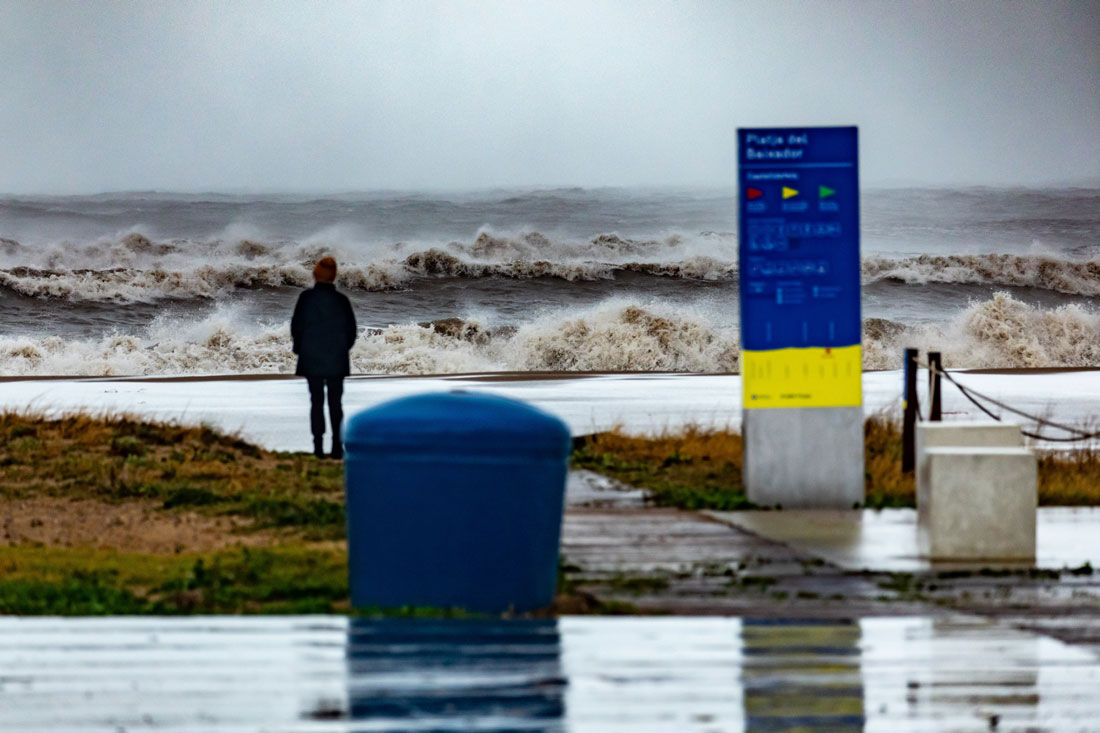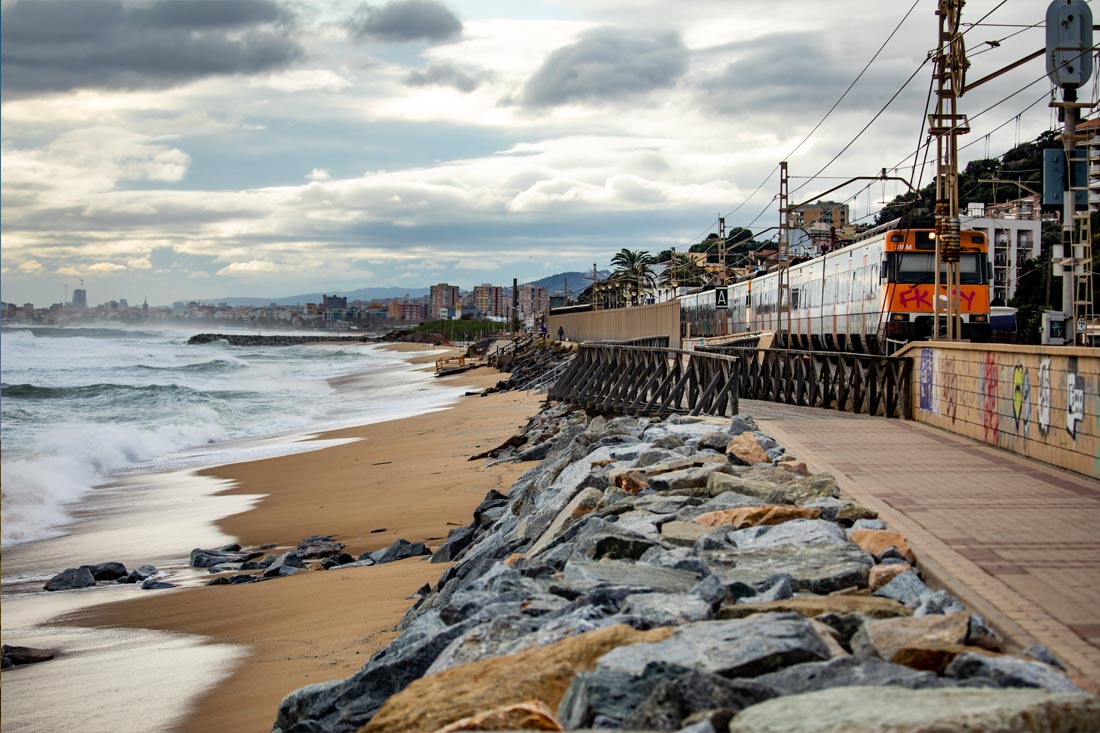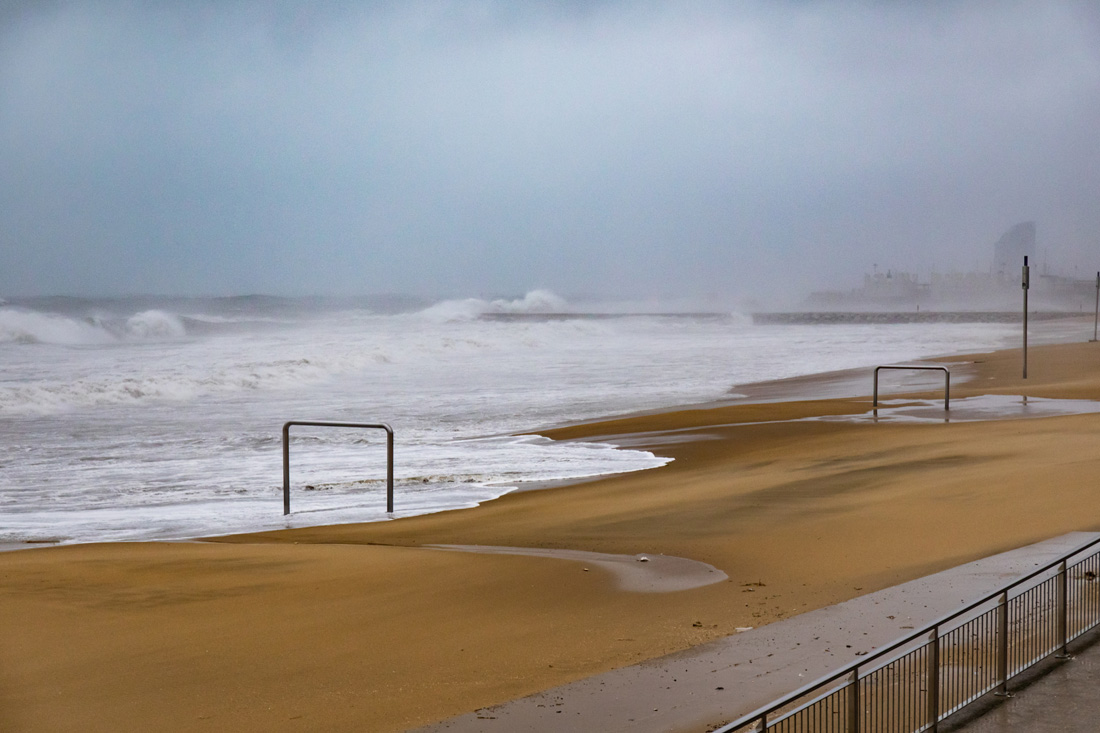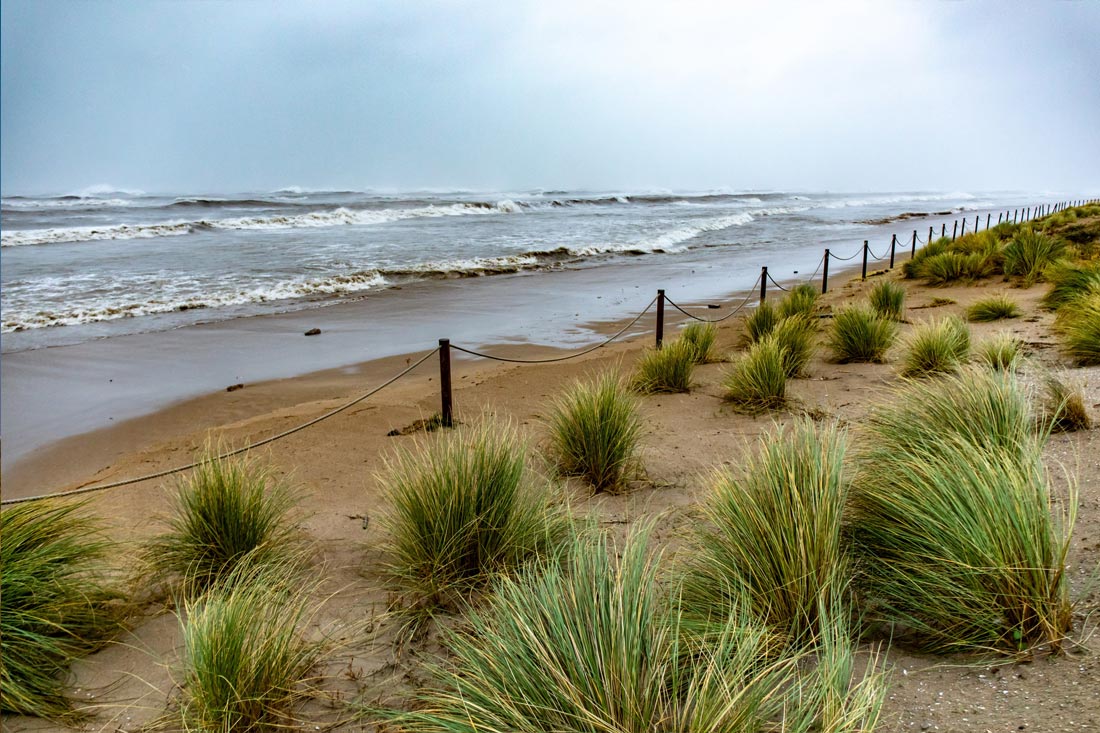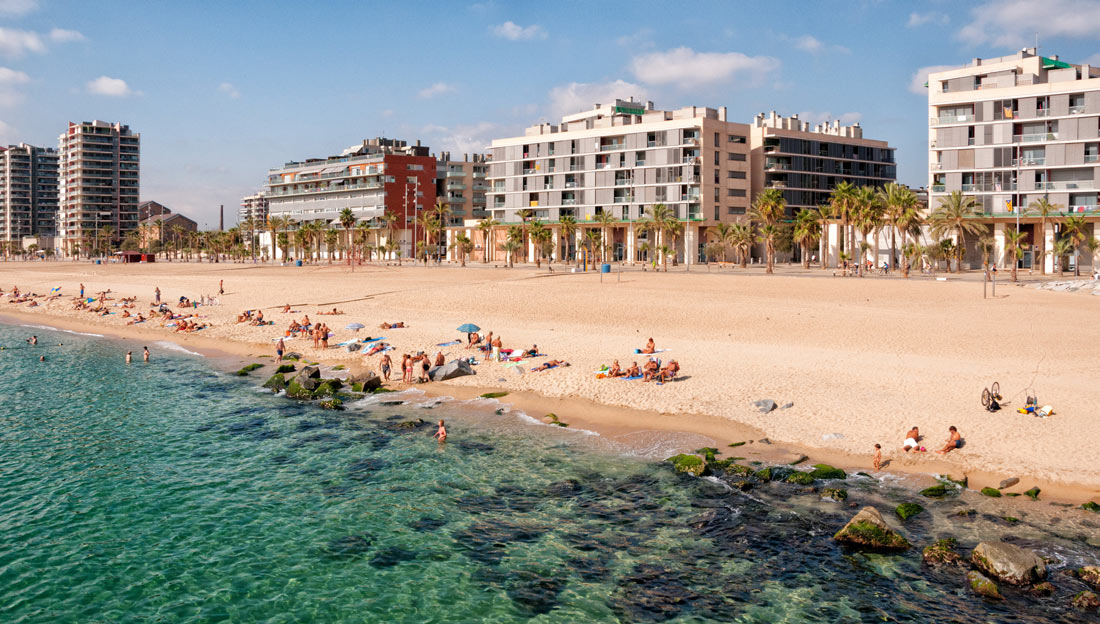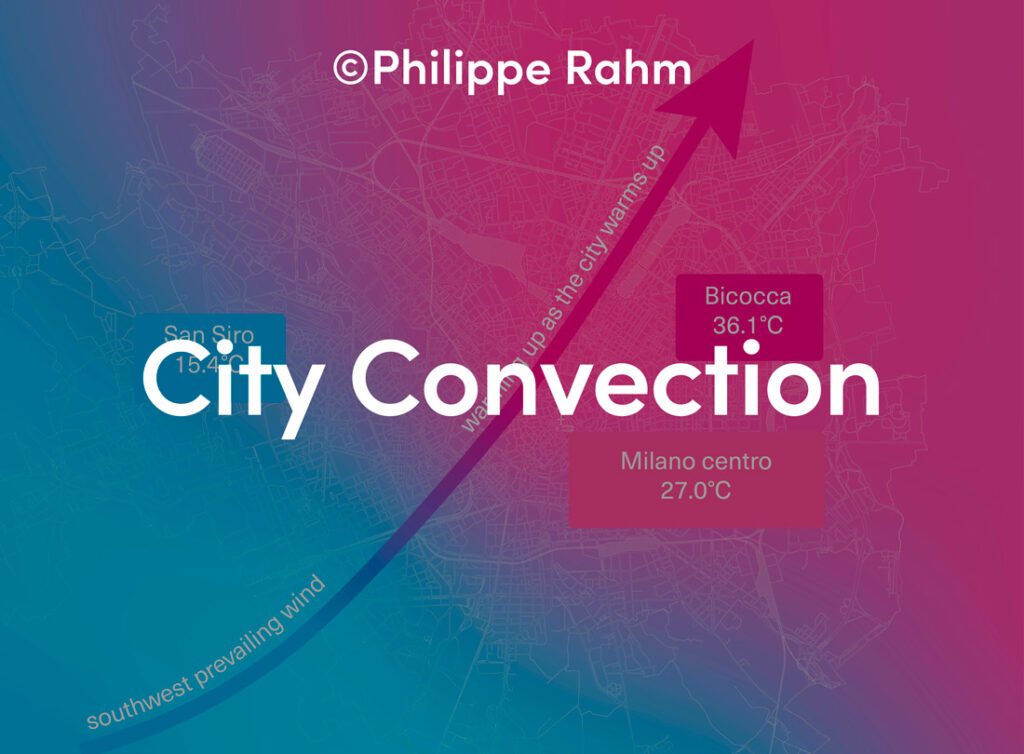The coastal strip of the metropolitan area of Barcelona is 42 km long including the municipalities of Montgat, Badalona, Sant Adrià de Besòs, Barcelona, El Prat de Llobregat, Viladecans, Gavà and Castelldefels. It is the seafront of a densely populated area, with over three million people in 636 km2, which is subject to great pressure due to its logistics, urban and tourism values. The beaches extend for 30 km along this stretch of coastline. Altogether, the beach and dunes cover an area of over 2,000,000 m2.
The metropolitan beaches are first-class public spaces, which are important from economic and social points of view. They now form an integral part of the collective imagination of these coastal municipalities and therefore need to be preserved and protected. The coastline is the main area of public use in the metropolis: over 10 million people use it every year and for an increasingly long season. For many citizens, beaches now form part of their everyday life. More than ever, during and after the pandemic, they have become a space for health and a climate refuge from the increasingly frequent hot nights.
Beaches are also of great importance from the point of view of nature and are areas with great biodiversity. Some beaches in Gavà, Viladecans and El Prat de Llobregat are protected at a European level through the Natura 2000 network, and these and other beaches are home to various protected species.
Beaches, and coastal areas in general, face numerous global challenges resulting from the impacts of human action that have accumulated over the last 100 years. These impacts are materialising in the metropolitan area in the form of significant beach retreat. Thanks to a number of studies, the AMB has found that, since 2014, the coastline has retreated significantly, with the loss of more than 20% of the surface area of the beaches. Regarding the variation in sand volume, it is calculated that there has been a reduction of more than 496,000 m3 of sand between 2013 and 2017. Almost all the beaches of the metropolitan municipalities (more than 90% of the sandy areas) are in a process of retreat, with varying degrees of severity depending on the case, ranging from a slight reduction in width to complete disappearance.
The causes of this retreat are complex and varied, and many of the factors are often interrelated. The most important of these are the reduction of available sediment, the disruption of coastal dynamics and meteorological factors related to climate change.
Reduction of available sediment
– Changes in agricultural land use. The decrease in the surface area of crops and barren land and the increase in the surface area of forests and scrubland reduce the amount of loose soil (sediments including sand of the beaches), which can be washed away by rain and rivers and streams into the sea and that finally reaches the beaches due to coastal dynamics.
– Urbanisation of the territory. Urbanisation in general, such as the construction of infrastructures and the expansion of urban areas, seals the surface, thereby reducing the amount of sediment that can be washed away by rainfall.
– Development of beaches and dune areas. Since the 1960s, there has been a significant urbanisation of parts of beach and dune areas for tourist use, since it is the sought-after “seafront”. This system of beaches and dunes, which used to act as a flexible barrier, is now rigid and less adaptable in the face of storms. The urbanisation affects all metropolitan beaches, except some in El Prat de Llobregat and Viladecans.
– Channelling of rivers and streams, and hydraulic works. They reduce the energy of the water and the carrying capacity of sand and other sediments, as well as the erosion of riverbeds. They often act as traps for sediments, which do not reach the sea.
– Communication infrastructures. Sometimes built on the beach or dune areas, such as the railway line in Badalona and Montgat. Urbanisation makes these areas rigid, and therefore much more fragile, while reducing the amount of available sediment that acts as a flexible defence against storms.
Disruption of coastal dynamics
– Coastal infrastructures. These infrastructures, such as breakwaters, but above all harbours, interrupt the coastal dynamics (which are dominated by the NE-SW coastal current), completely altering the distribution of the sand. In the case of the coastline of the metropolitan area of Barcelona, all the marinas built between the mouths of the rivers Llobregat and Tordera have an impact, since part of the sediments came from the Tordera area. The port of Barcelona has a major impact on the situation of the beaches of the Llobregat delta.
– Protection works at the mouth of the River Llobregat. The southern Llobregat dyke, built from the river’s diversion to prevent possible flooding, has acted together with the entire new riverbed as a trap for sediments, which have not reached the sea. This very long dyke sinks to a depth that makes it impossible for the sand that reaches the mouth of the Llobregat to return to the beaches, since it is outside the active zone where the sediment can return to the beach in the event of strong waves.
Meteorological factors related to climate change
The first two decades of the 21st century have seen record highs in sea temperature, an increase in sea level of about 4 mm per year, in meteorological tide heights, wave heights and extreme storms, which have become longer, more frequent and more intense. Changes in prevailing winds have also been detected, tropical and hot nights have multiplied, and in general all indicators of climate change are showing extremes, such as those we have experienced this summer. The latest IPCC report once again showed that the Mediterranean area could be one of those most affected by climate change.
In recent years, the beaches have suffered the effects of various storms, which have increased in frequency and intensity. The 2017 storms led to the almost total loss of several beaches in Montgat and Badalona, which have not recovered. The heavy storms of 2018 and 2019 continued to reduce the surface area of the beaches and the volume of sediment, to the point that several more beaches have disappeared, for example, in El Prat de Llobregat. Storm Gloria, at the end of January 2020, damaged beaches that had already been affected, this time mainly in El Prat de Llobregat and Barcelona. The latest storms in autumn 2021 and Storm Celia in 2022 have once again highlighted the precarious state of the beaches in the metropolitan area of Barcelona, with significant damage caused in Montgat, Badalona, El Prat and Gavà.
Therefore, at the same time, there is a reduction in available sediments due to various factors, the transport of these sediments is reduced due to hydraulic works and infrastructures, and finally the coastal dynamics that distribute sediments along the coastline are interrupted. This artificialisation of the system gives rise to the current problems, which will not solve themselves, but will require action in places where the natural systems and processes that used to maintain the beaches no longer do so.
Summary of the most important effects to date
Metropolitan beaches can be divided into three main units with regard to the sedimentary process: the northern area, Barcelona and the Llobregat Delta.
Northern area
Montgat has been losing over 1,200 m of sandbanks and over 30,000 m3 of sand per year at the northern end (Can Tano, Monsolís and Els Toldos beaches). The loss of these beaches has led to the removal of the natural barrier protecting the railway line and has compromised the infrastructure. In the same municipality, Les Roques beach has practically disappeared, and the promenade has collapsed. In Badalona, all the beaches have lost sand in recent years, at a rate of about 10,000 m3/year. These losses have exposed old foundations and breakwaters that had never been exposed before. Of particular note is Barca Maria beach, located further north, which practically disappeared with the storms of 2021 and 2022. In the same municipality, La Mora beach, to the south of the Port of Badalona, no longer exists. The beaches of Sant Adrià de Besòs, on the other hand, remain stable (the only ones in the metropolitan area).
Barcelona
The beaches most affected by coastal retreat are, above all, those of Mar Bella, Nova Mar Bella and Llevant, located to the south of the Olympic Port. The loss of sand continues, which is serious in some places, such as Barceloneta, and is currently also affecting the San Sebastià and Somorrostro beaches. The submerged breakwaters that protect some of these beaches have suffered damage or subsidence as a result of the storms in recent years and no maintenance has been carried out, so that in some cases they have lost their functionality. The current rate of sand loss is about 20,000 m3 per year.
The Llobregat Delta
In El Prat de Llobregat, Ricarda beach, in the protected areas of the Delta, no longer exists, due to the catchment of the desalination plant, which was subsequently protected by a breakwater. The naturist beach, located on the southern part of this breakwater, has completely disappeared and has been closed due to the instability of the rocks. In these areas, more than 1,500 metres of beaches have been lost. The storms of 2021 and 2022 have caused erosion to advance southwards, along 650 metres of Can Camins beach. In Viladecans, the most affected beaches are those located within the protected areas of the Delta, Pineda de Cal Francès and Remolar, which have lost important dune areas, and the special protection area for birds has been seriously affected. In Gavà, after the storms of 2017, the sea reached about 20 metres from the buildings, and with the storms of 2022, an area of 300 metres of dune front has been eroded. Castelldefels used to be a very stable beach, but since 2017 beach flooding has become increasingly intense and frequent in the western half of the municipality. Likewise, from 2020 onwards, all beaches in Castelldefels have clearly been retreating.
Despite the Port of Barcelona’s annual contribution of 100,000 m3 of sand in compliance with the Environmental Impact Statement, the beaches are still retreating; the volumes provided are therefore totally insufficient. Based on shoreline changes, lost sediment cell volumes have been estimated at 160,000 m3 per year, far in excess of current inputs.
Actions taken by the AMB
Due to the increasingly frequent and costly effects of beach retreat, the Barcelona Metropolitan Area has considered it necessary to carry out a number of studies and collect essential data in order to defend beaches that can continue to maintain their functions. These studies are necessary in order to gain detailed knowledge of the evolution and dynamics of the beaches, such as orthophotography flights with LIDAR sensors, high-resolution topo-bathymetry or monthly monitoring of the measurement of beach width. The AMB has also carried out preliminary studies to determine the dynamics and stabilisation of the beaches of the Llobregat Delta and the northern area (Sant Adrià de Besòs, Badalona and Montgat). In the latter case, and given the urgency of the necessary actions, a new document proposing structural actions was drawn up in 2022.
Dune systems associated with beaches are an important sand reserve and also the first barrier encountered by the sea (where they exist). Therefore, one of the actions carried out by the AMB consists of protecting and improving the dune systems to increase their resilience and to mitigate, if possible, the effects of storms, as well as other effects derived from climate change.
It is essential to inform the public about the current problems faced by the metropolitan beaches. In this sense, the AMB carries out actions such as participatory projects (Acció Platges Met, dune planting and invasive species removal campaigns, educational activities, service-learning projects…) and promotion projects aimed at all audiences (Jugatecambientals, cycle of activities in the metropolitan parks, beaches and rivers…). It has also published educational materials to disseminate the values of dune areas, beaches, coastal retreat and climate change.
Conclusions
The situation is totally unsustainable. Despite the importance of beaches as a defence for urban areas and infrastructures, and their immense social, tourism and ecological value, there are no studies that allow us to make realistic forecasts for the future, nor to face the different effects that have already been detected due to global climate change. It has come to a point where, in order to stabilise beaches (or improve their resilience), it is urgent to plan and implement structural measures through sedimentation and erosion management.
We are challenged with preserving, recovering, maintaining and promoting these natural spaces in a way that is compatible with intense public and recreational use. The intervention of all the administrations with powers is necessary, basically the General State Administration, which has the bulk of the powers over the coastline, as improved coordination and planning between the different administrations concerned would have a very positive impact on the public use of these spaces.
